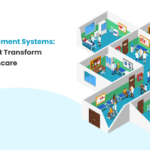
These days, companies and individuals pay each other using digital, cashless methods like Venmo instead of actual cash. Although these digital choices are popular, many people are unaware that ACH is responsible for the transfer between bank accounts.
ACH, or the National Automated Clearing House, is a banking network that manages payments between bank accounts. With more than 355.2 million payments handled in Q1 of 2024, the ACH Network is solely in charge of electronic fund transactions in the US. ACH transfers fall into two separate categories: ACH credit and ACH debit.
Though we will discuss the distinctions between the two later, ACH debit occurs when the sender authorizes the recipient to withdraw funds from their account. In contrast, ACH credit involves the sender initiating the transfer to the recipient.
This article will cover the following topics:
- Is ACH credit or debit the better option for your company?
- How does ACH debit operate, and what is it?
- How does ACH credit operate, and what is it?
- What is the duration of ACH credit and debit transfers?
- ACH Debit Types
- ACH Debit versus ACH Credit
Is ACH Credit or Debit the Better Option for Your Company?
Just because you can do something doesn’t mean you should, as is the case with almost every other service globally. ACH is no exception to the rule that you should prioritize what is best for your company. Therefore, even if we are unable to provide an answer, we can provide you with the resources to determine whether ACH Debit or Credit is best for your company:
- US bank accounts are necessary for ACH.
- Recurring or scheduled transfers are possible with ACH.
- ACH can make it easier to submit bill payments.
- ACH cannot be used to pay between different countries.
- Businesses are unable to earn reward points through ACH.
- ACH costs less than domestic wire transfers.
How does ACH Debit operate, and what is it?
- ACH debit is part of ACH or Automated Clearing House.
- The pull-based nature of the ACH debit transfer is what makes it unique.
- An ACH debit occurs when the paying entity agrees to the recipient withdrawing money directly from their account.
- When the recipient initiates an ACH debit, it occurs within the context of payments and transfers. For instance, automatic bill-pay systems frequently use ACH debit.
How does ACH Credit operate, and what is it?
- An Automated Clearing House (ACH) credit is a transfer initiated by the paying organization instead of the recipient.
- The push-based feature of ACH credit sets it apart. It allows the payer to move money into the recipient’s bank account whenever they choose.
- ACH credit allows the payer to initiate transfers straight from their bank account to the recipient’s and pay bills.
What is the Duration of ACH Credit and Debit Transfers?
In baseball, as they say, there are no guarantees. This also applies to ACH credit and debit transfers. ACH cannot provide a specific transfer date or time but can give a timeframe. The following is the typical time split for ACH Credit and Debit:
- ACH credit transfers usually take one to two days to process.
- ACH debit transfers take a bit longer than ACH credit transfers. They usually take three to six days to process.
ACH Debit Types
ACH Debit functions as a catch-all term for various debit types, even though it primarily operates on a pull-based system. Although each sort of debit payment has a Standard Entry Class (SEC) number, it typically fits into one of two use case categories: recurring payments or one-time payments.
1. One-Time Payments
A one-time ACH debit payment is a single transaction. The variations under this category represent all potential ACH debit transactions. They consist of the 13 types listed below:
- Accounts Receivable Conversion (ARC)
- Cash Concentration or Disbursement (CCD)
- Back Office Conversion (BOC)
- Corporate Trade Exchange (CTX)
- International ACH Transaction (IAT)
- Point of Sale (POS)
- Prearranged Payment and Deposits (PPD)
- Point of Purchase (POP)
- Re-presented Check Entry (RCK)
- Internet Initiated Entry (WEB)
- Check Truncation (TRX)
- Telephone Initiated Entry (TEL)
- Shared Network Transaction (SHR)
2. Recurring payments
Only a few types can handle recurring payments, though they can all handle one-time payments. The three variations of these recurring payment types are as follows:
- Internet Initiated Entry (WEB)
- Prearranged Payment and Deposits (PPD)
- Telephone Initiated Entry (TEL)
TEL and WEB are ACH Debit transactions that are started over the phone or online. PPD transactions, on the other hand, occur when a client provides hard copy, paper-based consent to authorize a payment.
Important Distinctions Between ACH Credit and ACH Debit Transactions
The money flow direction is different for ACH debits and ACH credits. Here is a summary of the main distinctions between ACH credit and ACH debit transactions:
Who Gets the Cash?
For example, when you pay a vendor, contractor, or employee, you send money to the recipient through an ACH debit transaction.
For example, when a customer pays the remaining amount on an invoice, you get money from the recipient via an ACH credit transaction.
Who initiates the transaction?
The individual making the payment initiates each ACH transaction. This implies that you can only start an ACH debit payment. You can only request payment from someone who owes you money (an ACH credit) and wait for them to start the ACH credit process.
Decoding ACH: Choose the Right Option
The necessity for push vs. pull transactions is the main factor influencing ACH transfers and the distinction between debit and credit. The requirement of a certain situation, whether for point of sale, payroll, or even transfers to your Venmo account, becomes more important than personal preference.
You may come across ACH Credit and ACH Debit transactions regularly in your company’s day-to-day financial operations. To make the transactions more effective and quicker, you can get support from Financial Technology (FinTech) companies.
These organizations can assist enterprises in various ways, from opening an online bank account to obtaining a visa and even automating bill payments. Additionally, by offering client support, fintech companies improve overall corporate operations.








